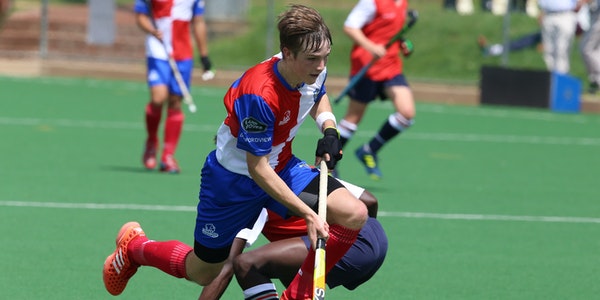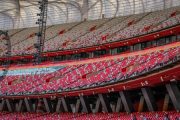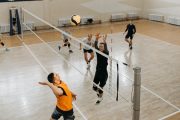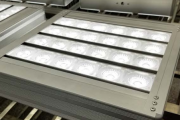Standard size and specification requirements for hockey field
Hockey is one of the oldest sports in the world. Hockey is an official event of the Olympic Games and the Asian Games, which is highly valued by governments and countries at all levels. Hockey has only been developed in China for more than 30 years. For most Chinese audiences, this sport is still relatively unfamiliar. With the rise of the Chinese women’s hockey team, more and more spectators are keen on this event.
The Size of Hockey field
The hockey field is dominated by artificial turf. The field area is close to that of a football field. It is 91.4m long and 55m wide. The long side is the sideline and the short side is the endline. The field marking should be white, the line width should be 75mm, and the line width should be included in the field. The distance between the two goal posts on the end line is the goal line. 4m and 5m buffer areas should be vacated on the sidelines and end lines of the competition field respectively, and 4m wide off-court work areas should also be vacated between adjacent competition fields.
Mark line
The line connecting the midpoints of the two sidelines is the midline, at a distance of 22.9m from the midline position. When connecting two 22.9m lines at a distance of 1.83m from the midpoint of the end line on the outside of the end line, draw a 150mm mark line respectively (the inner edge of the mark line to the end line) The distance to the midpoint).
6.4m in front of the midpoint of the goal line, draw a penalty spot with a diameter of 150mm.
Draw a 3.66m long marking line directly in front of the midpoint of the end line, parallel to the end line, 14.63m from the end line (the above distance is the distance from the outer edge of the marking line to the outer edge of the end line), and the inner side of the opposite goal post The angle is the center of the circle. Extend the line to both sides so that it intersects with the end line to form a 1/4 arc. This line is called the shooting arc.
A dashed line is drawn along 5m outside the arc. The length of each solid line is 300mm, and the interval between the solid lines is 3m.
Hockey Field Facilities
The goal should be set in the middle of the end line of the field, the post and the gauge should be rectangular, the cross-sectional area size is 51*75mm, and the color is white. The beam is 3.66m long, the column height is 2.14m, the beam depth is not less than 0.9m, and the ground depth is not less than 1.2m.
A side baffle no less than 1.2m long and 0.46m high is placed on the ground on the side of the net, fixed on the back of the goal post, at right angles to the end line, and its thickness does not exceed the width of the post. At the back of the net, a 3.66m long and 0.46m high rear baffle is set up, connected with the baffles on both sides and placed on the ground. The side and rear aprons are painted dark.
The net is placed behind the goal post and connected to the side fence and the back fence. The distance between the hooks shall not exceed 150mm, and the mesh shall not exceed 45mm.
A flagpole with a height of 1.2m~1.5m shall be set at each corner of the playing field, which shall be placed on a spring seat, and the length and width of the flag shall not exceed 0.3m.
A fence net should be set around the site, the net height is 1.0m, and a high net should be set outside the fence. The net height should not be less than 6.0m. The spacing of the high net columns should be controlled at 3.0~3.5m. The size and spacing of the columns should be combined with the specific wind power of each place. It depends on the situation.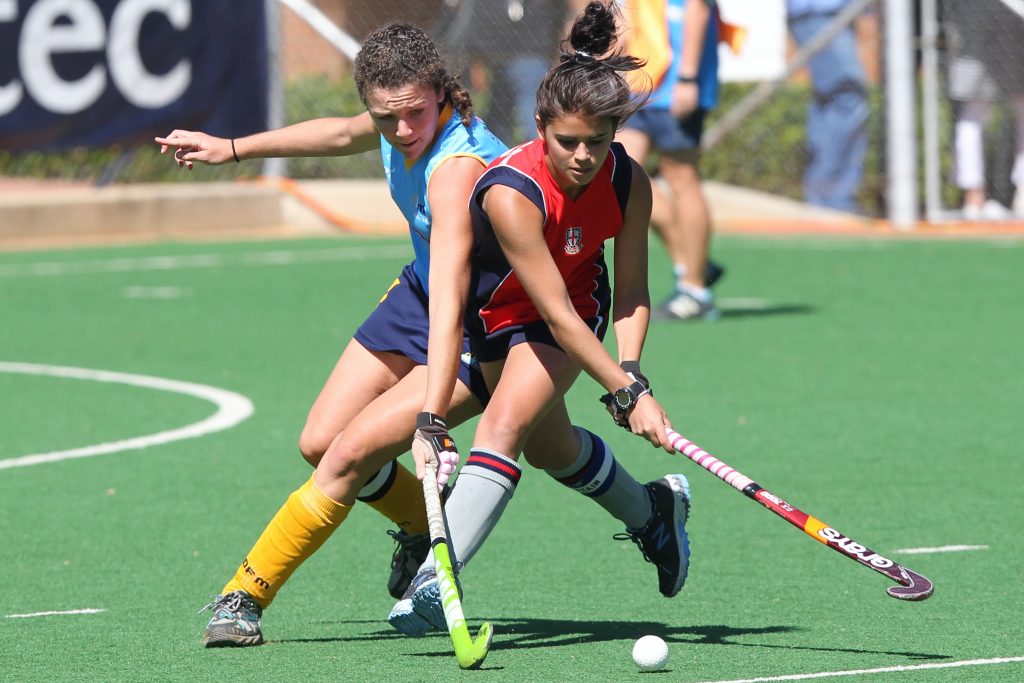
Site environment
Site foundation: The thickness of the outdoor site foundation should be determined according to the local environmental climate conditions and geological conditions, and should meet the requirements of firmness, stability and compactness.
Surface layer: The color of the artificial turf in the competition area and the buffer zone should be distinguished. Generally, the competition area is green and the buffer zone is red. The artificial turf surface layer should be adopted for the competition field, and the field should be flat.
Site drainage
The drainage slope of the site should be 0.2%, and the drainage slope of the off-site work area should be 0.1%. The site and its buffer zone generally adopt the “drainage and seepage combined” drainage method. The underground drainage system is closely related to the site structure, and blind ditch forms are mostly adopted. Drainage ditches should be set around the site, and sand sinks should be evenly set in the ditches (the spacing should be 30m). The depth and width of the drainage ditches should be calculated according to local climatic conditions, and the location should be determined according to the specific site layout.
What Are the Requirements for Hockey Stadium Lighting Design?
A modern hockey stadium must have a good lighting environment, ensure visual effects, and meet the lighting requirements of the audience, contestants and TV broadcasts. Then, do you really know how the lighting of the hockey stadium is designed? The author today will popularize the four-corner layout of the hockey stadium lighting.
Four corners of the hockey stadium lighting
The four corners of the hockey stadium lighting are arranged in a concentrated form and the light poles are arranged in the four corners of the hockey stadium. Until today, many hockey stadium lighting facilities are still arranged in four corners, and four light poles are set at the four corners of the hockey stadium, the pole height is generally 33-58m. This arrangement is suitable for hockey courts with no canopy or low canopy height. This method has low lighting utilization, difficult maintenance and repair, and high cost.
The angle between the bottom row of floodlights and the center of the hockey field should not be less than 25° to determine the height of the light pole. Therefore, the distance between the light pole and the center of the hockey field is different, and the height of the light pole is also different; The midpoint of the bottom line and the bottom line of the hockey field are at an angle of 10° outwards (with a TV broadcast at a 15° angle), and the midpoint of the hockey field sideline and the sideline outward form a 5° angle. It is the location of the light pole. By adopting various projection lights with different beam angles, a suitable illuminance distribution can be formed on the hockey field.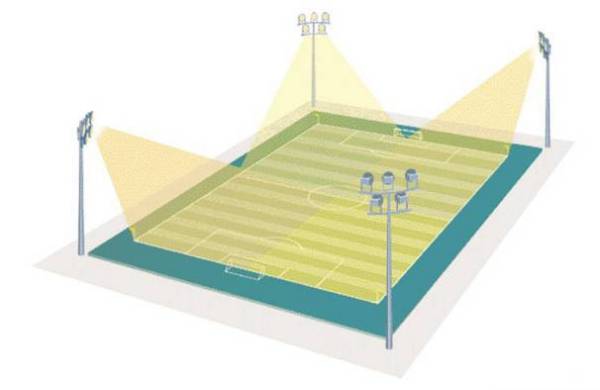
Improvement Measures for Hockey Stadium Lighting
However, TV broadcasting now requires higher and uniform vertical illuminance, and the required angle of light incident on the far part of the hockey field is far less than the prescribed limit. The high brightness of the large gas discharge lamp and the high height of the traditional lamp pole inevitably produce excessive glare.
The shortcomings of this type of four-corner cloth lights are: the visual changes in different viewing directions are large, and the shadows are deeper. From the color TV broadcast, it is really difficult to meet the vertical illuminance in all directions and control the glare. . To meet the requirements of the Ev/Eh ratio and reduce glare, it is necessary to take some improvement measures for the four corners of the hockey field.
(1) Move the four corners to the sides and outside of the sideline, so that the opposite and four corners of the hockey field can obtain a certain vertical illumination.
(2) Increase the number of projection lamps on the light pole on the side of the TV main camera to strengthen the beam projection.
(3) Add light strip lighting on the top of the stands on the side of the main TV camera. Pay attention to controlling the glare, and should not make the spectators at both ends of the hockey field detect it.
Hockey stadium lighting options
Due to the professionalism and particularity of hockey sports, the choice of hockey court lighting should be very careful. In the field of hockey lighting, Tachyon light is currently the first in the industry. As a supplier of LED sports lighting system solutions.
- Intelligent network control:
Stepless dimming: fast light and dark automatic adjustment, real-time control, multiple self-protection;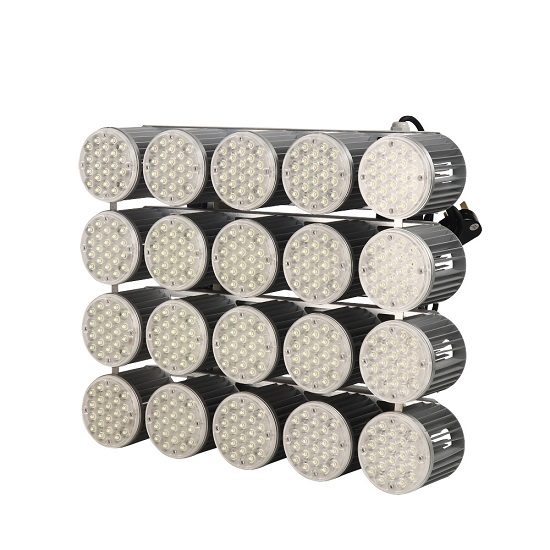
- Green energy saving, low carbon and environmental protection:
More than 65% energy saving than traditional metal halide lamps;
- Safety and environmental protection:
There is no risk of bulb explosion, no heavy metal toxic and harmful substances such as mercury, no ultraviolet light hazard, less light spilling, and reduced environmental light pollution;
- High cost performance, low maintenance:
Long service life, more than 20 years of lamp life; 25% higher light efficiency than ordinary LED lights, greatly reducing system installation costs; low maintenance, saving 80% of long-term maintenance costs;
- Low glare:
Even light distribution, built-in anti-glare and anti-overflow devices;
- Momentary switch start, easy to use.
For hockey, you must be equipped with the most professional equipment, after all, professional is the best.

